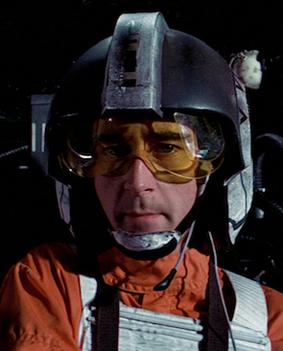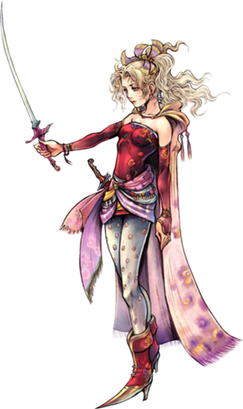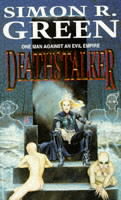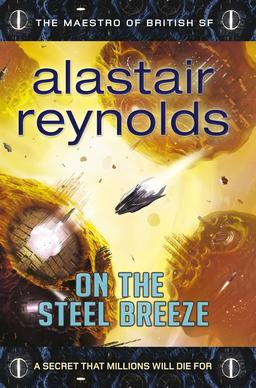Related Research Articles

Paul J. McAuley is a British botanist and science fiction author. A biologist by training, McAuley writes mostly hard science fiction. His novels dealing with themes such as biotechnology, alternative history/alternative reality, and space travel.

Wedge Antilles is a fictional character in the Star Wars franchise. He is a supporting character portrayed by Denis Lawson in the original Star Wars trilogy, and voiced by David Ankrum in Episode IV – A New Hope (1977) and Rogue One (2016). He is also featured in the Star Wars expanded universe, most notably as the lead character in most of the X-Wing novels. Antilles has also appeared in the sequel trilogy film The Rise of Skywalker (2019), with Lawson reprising his role; in the 2014 animated series Star Wars Rebels, voiced by Nathan Kress; and in the 2023 second volume of Star Wars: Visions, voiced again by Lawson.

The Xianfeng Emperor, also known by his temple name Emperor Wenzong of Qing, personal name Yizhu, was the eighth emperor of the Qing dynasty, and the seventh Qing emperor to rule over China proper. During his reign, the Qing dynasty experienced several wars and rebellions including the Taiping Rebellion, the Nian Rebellion, and the Second Opium War. He was the last Chinese emperor to exercise sole power.

The Daoguang Emperor, also known by his temple name Emperor Xuanzong of Qing, personal name Mianning, was the seventh emperor of the Qing dynasty, and the sixth Qing emperor to rule over China proper. His reign was marked by "external disaster and internal rebellion". These includes the First Opium War and the beginning of the Taiping Rebellion which nearly brought down the dynasty. The historian Jonathan Spence characterizes the Daoguang Emperor as a "well meaning but ineffective man" who promoted officials who "presented a purist view even if they had nothing to say about the domestic and foreign problems surrounding the dynasty".

The Qianlong Emperor, also known by his temple name Emperor Gaozong of Qing, personal name Hongli, was the fifth emperor of the Qing dynasty and the fourth Qing emperor to rule over China proper. He reigned officially from 1735 until his abdication in 1796, but retained ultimate power subsequently until his death in 1799, making him one of the longest-reigning monarchs in history as well as one of the longest-lived.

Roma Eterna is a science fiction fixup novel by American writer Robert Silverberg, published in 2003, which presents an alternative history in which the Roman Empire survives to the present day. Each of the ten chapters was first published as a short story, six of them in Asimov's Science Fiction, between 1989 and 2003.

Terra Branford, known as Tina Branford in Japanese media, is a character in the Final Fantasy series and the main protagonist of Final Fantasy VI. Yoshitaka Amano and Tetsuya Nomura designed her for the main series installment, with Kazuko Shibuya designing her in-game sprites alongside the rest of the characters. She also appears in the spin-off fighting game series Dissidia Final Fantasy and the rhythm series Theatrhythm Final Fantasy. She has made small appearances in several other games in and outside the Final Fantasy series.

The Empire of Man is a series of science fiction books by David Weber and John Ringo published by Baen Books. It combines elements of space opera and military science fiction.

Gardens of the Moon, published on April 1, 1999, is the first of ten novels in Canadian author Steven Erikson's high fantasy series the Malazan Book of the Fallen.

The Saga of Seven Suns is a series of seven space opera novels by American writer Kevin J. Anderson, published between 2002 and 2008. The books are set in a not-too-distant future where humans have colonized a number of other planets across the galaxy, thanks in part to technological assistance from an ancient alien race, the Ildirans. The series chronicles the universe-spanning war that erupts when humans inadvertently ignite the fury of a hidden empire of elemental aliens known as the hydrogues. Internal conflict is sparked within both the human and Ildiran empires as other ancient elemental races reappear to renew their own ancient war with the hydrogues.

Deathstalker is a science fiction novel by British author Simon R. Green. The second in a series of nine novels, Deathstalker is part homage to – and part parody/satire of – the classic space operas of the 1950s, and deals with the timeless themes of honour, love, courage and betrayal.

Star Wars Miniatures is a 34mm scale collectible miniatures tabletop game based on the Star Wars fictional universe that was produced by Wizards of the Coast. The game was originally released in September 2004 and continued production until May 2010. Star Wars Miniatures players build point-based squads from one of ten different in-universe factions then conduct battles between those squads. The game mechanics are a simplified version of the d20 roleplaying game system. Multiple maps, scenarios, and set themes from different settings and time periods from within the Star Wars universe are available.

Ch'od is a fictional character appearing in American comic books published by Marvel Comics. The character is usually seen in the X-Men series and various spin-offs.

Tytania is a Japanese space opera novel series written by Yoshiki Tanaka between 1988 and 2015 and released in five volumes. The series is about people who try to liberate the galaxy from the rule of the Tytania-clan and seek refuge with a rebel force. It has been adapted into manga and anime in 2008–2011.
Ironwolf is a fictional character which appeared in the last three issues of Weird Worlds, a comics anthology series published by American company DC Comics from 1972 to 1974.

Star Wars Rebels is an American 3D animated science fiction television series produced by Lucasfilm Animation and set in the Star Wars universe. It takes place 14 years after Star Wars: Episode III – Revenge of the Sith (2005) and progressing toward the events of the original Star Wars film (1977). It depicts the Galactic Empire hunting down the last of the Jedi while a fledgling rebellion against the Empire emerges. The visual style of the series is inspired by the original Star Wars trilogy concept art by Ralph McQuarrie. The series features new characters, along with some from the original trilogy and from the previous animated series, Star Wars: The Clone Wars (2008–2020). The series comprises four seasons.

On the Steel Breeze is a science fiction novel by Welsh author Alastair Reynolds, which was first published by Gollancz on 26 September 2013. It is the second part of Reynolds' future history Poseidon's Children trilogy, following his 2012 novel Blue Remembered Earth. On the Steel Breeze was followed on 30 April 2015 by the concluding novel of the trilogy, Poseidon's Wake.

The territory of Crimea, previously controlled by the Crimean Khanate, was annexed by the Russian Empire on 19 April [O.S. 8 April] 1783. The period before the annexation was marked by Russian interference in Crimean affairs, a series of revolts by Crimean Tatars, and Ottoman ambivalence. The annexation began 134 years of rule by the Russian Empire, which was ended by the revolution of 1917. The annexation resulted in the end of the Crimean slave trade, which had been one of the major slave trades from Europe for centuries.
This is a complete bibliography by English space opera and fantasy author Simon R. Green.
References
- ↑ "Deathstalker Rebellion by Simon R. Green".
- ↑ Grimwood, Jon (18 January 2003). "Review of Deathstalker Legacy from Guardian Online". The Guardian. London. Retrieved 24 May 2007.
- ↑ "Reviewer for Infinity Plus, retrieved from awfulagent.com". Archived from the original on 8 October 2007. Retrieved 24 May 2007.
- ↑ Shoul, Simeon. "Review of Deathstalker Legacy on infinityplus.co.uk" . Retrieved 24 May 2007.
- ↑ "Reviewer for Locus magazine, retrieved from awfulagent.com". Archived from the original on 8 October 2007. Retrieved 24 May 2007.
- ↑ DuMond, Lisa. "Transcript of an interview with Simon R. Green at sfsite.com" . Retrieved 24 May 2007.
- ↑ "Reader review on burningvoid.com, previously on epinions.com" . Retrieved 24 May 2007.
- ↑ Berlyne, John. "Review of Deathstalker at sfsite.com" . Retrieved 24 May 2007.
- 1 2 Harlib, Amy. "Interview with Simon R. Green on scifidimensions.com" . Retrieved 25 May 2007.